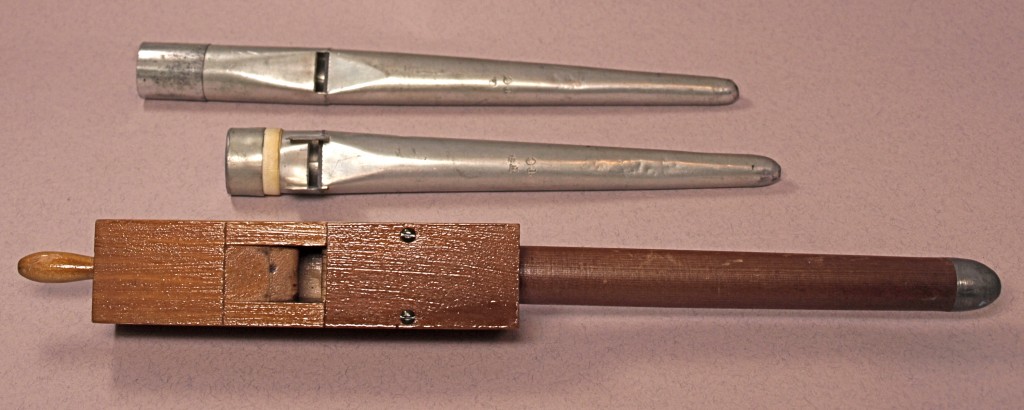
The most characteristic stop of the theatre organ; essentially a flute of extremely wide scale. Developed by Robert Hope-Jones, the predominating example by far is the Tibia Clausa. A much smaller number of Tibia Plenas also exist, though these are generally judged less useful as an ensemble stop.
First included as a single 8′ pitch solo stop, the Tibia Clausa’s potential as a major tonal building-block capable of filling a large theatre soon became recognised, and extensions to many pitches became the norm. The evolution of the Chicago Theatre Wurlitzer under Jesse Crawford’s direction is an example that set the pattern.
A feature of the Tibia Clausa is its ability to absorb and amplify the tonality of other stops it is drawn with, for example if 8′ Tibia and 8′ Clarinet are drawn together
Construction:
Open (‘plena’) or stopped (‘clausa’), metal or wooden. May have open metal pipes in the treble to counter the effects of the extreme scale. Upper lip usually leathered except in pre-1926 Wurlitzer examples. Usually voiced on 10″ pressure or 15″ on larger instruments.
Tonality:
Untremulated, the Tibia Clausa has a rather loud, thick, dull tone. With suitable tremulation, it ‘comes to life’ and good examples exhibit a pleasing pitch variation.
The brighter, less yielding tones of the Tibia Plena make this stop generally less popular.
|
STOP NAMES |
|
|
Tibia Clausa |
Stopped Tibia at 8′ or 16′. Wurlitzer examples wooden; Compton metal (with specific exceptions) and Christie wood (with specific exceptions). May be labelled simply ‘Tibia’. |
|
Tibia Plena |
Open Tibia. Wurlitzer examples wooden. |
|
Tibia Minor |
Smaller scale Tibia. Nomenclature used by Compton – Wurlitzer did not differentiate. |
|
Piccolo |
4′ and 2′ Tibia stop. |
|
Twelfth |
2 2/3′ Tibia stop |
|
Ocarina |
Alternative (usually Compton) nomenclature for 2′ Tibia stop. |


